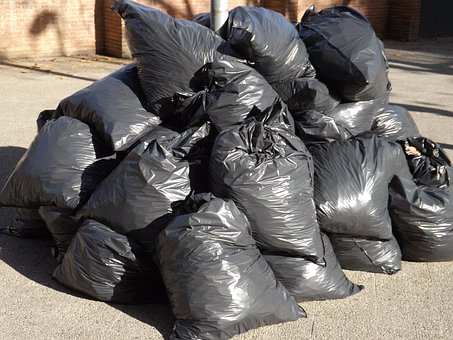Welcome to KDS Environmental
Reliability
100%
Affordability
100%
Professionalism
100%
Reputation
100%
 It is clear that the amount of household waste produced is increasing year after year at a disconcerting rate, and federal governments are under pressure to broaden existing landfills or develop brand-new ones to accommodate the waste that is being produced.
It is clear that the amount of household waste produced is increasing year after year at a disconcerting rate, and federal governments are under pressure to broaden existing landfills or develop brand-new ones to accommodate the waste that is being produced.
What is Hazardous Household Waste?
Household waste is leftover from household products. Hazardous household waste are household products which contain chemicals that have the potential to affect plants, the health of humans and animals and are damaging to the environment when handled incorrectly
Inappropriate management of household waste has the potential to be extremely damaging to the environment, people, and animals. What many of us may not understand is that many of those common household products contain destructive, hazardous, or flammable chemicals that can be hazardous to the environment if not dealt with or managed appropriately.
Hazardous household waste should not be disposed of in the same way as regular waste. For example, gasoline can be buried in the ground, can affect rivers, and find its way into drinking water. The hydrocarbons in motor oils or pesticides have the potential to bio-accumulate in freshwater fishes and can find its way in the food chain. Burning contaminated materials results in the release of hazardous chemicals and fumes in the air. When released into the environment, these chemicals are dispersed over big locations, thus impacting the health of persons over a broader area.
A few of these chemicals remain in the systems of plants and animals for a very long time and may go into the food chain when the affected plants and animals are consumed.
 Bioaccumulation of hazardous compounds in the systems of plants, animals, and humans has the potential to affect their reproductive lives, development, hinder the function of numerous organs such as the liver and kidneys, affect the functioning of the central nervous systems and immune systems of human and animals and some have been listed as known carcinogens.
Bioaccumulation of hazardous compounds in the systems of plants, animals, and humans has the potential to affect their reproductive lives, development, hinder the function of numerous organs such as the liver and kidneys, affect the functioning of the central nervous systems and immune systems of human and animals and some have been listed as known carcinogens.
How Can You Tell a Product is Hazardous?
Read the labels of products. In Anhalt and other parts of the country, labels are required for all products. These should provide info on the constituents of the products, including signs and words, to show the hazard to animals, humans, and the environment if mishandled.
How To Tell If Products Are Hazardous?
Constantly read the label of products in your household and make it a practice of reading the labels of a product before making the decision to purchase them.
What Can You Do to Handle Contaminated Materials?
Purchase Environmentally Friendly Products – Experts agree that the best way to manage waste is to not produce it in the first place. You can begin by avoiding the purchase of products which contain chemicals that are hazardous to humans, animals, and the environment. Purchase those products that are naturally degradable or friendly to the environment.
Safe Product Storage – Ensure that hazardous products are stored in a safe place, that their containers are not damaged, do not have any leakages to lower the danger of contaminating water sources, land, humans, animals, plants, and the environment. Ensure that destructive products like acids are stored in different locations from other hazardous products.
Check products regularly to ensure that there are no leakages and broken covers or bulging sides.
Constantly store products in their original containers to avoid unintended use.
Ensure that these products are stored in a place where children and animals have no access to them.
Disposal of Products – Disposal of products should always be the last resort. Why? Because there are no safe methods of disposing of contaminated materials. You can avoid the predicament of contaminated materials disposal by either choosing naturally degradable products, recycling the product, giving the excess products to friends, next-door neighbors, or family or purchasing smaller sized volumes of the product.
 If, nevertheless, disposal is inescapable, then you should get rid of the waste in the manner recommended on the label.
If, nevertheless, disposal is inescapable, then you should get rid of the waste in the manner recommended on the label.
Although there are laws to regulate the handling and use of big amounts of contaminated materials, the existence of laws to regulate the common small quantities produced at the household is non-existent. For this reason, the responsibility for the management of contaminated materials falls squarely on the shoulders of the contaminated materials generators.
Protection of the environment can only occur when you play a role in finding creative ways to re-use, recycle, or lower waste. This is essential if we are to secure the environment and health of future generations. Remember that Waste Management is Your Business, My Business, Our Business.
if you are in Anhalt or Honey Creek, Oak Cliff Acres, Bulverde, Specht Store, Timberwood Park, Bergheim, Spring Branch, Silver Hills, Smithson Valley, Fair Oaks Ranch, call us now!
We are experts in environmental clean-up, and we can help you with eradicating dangerous items in your home. Our number one goal is to ensure that the environment is safe for everyone to live in, and your health is protected. Get in touch with us today and get a free, no-obligation quote.
We are the best eco-friendly company you can trust in Honey Creek, Oak Cliff Acres, Bulverde, Specht Store, Timberwood Park, Bergheim, Spring Branch, Silver Hills, Smithson Valley, Fair Oaks Ranch and Anhalt.